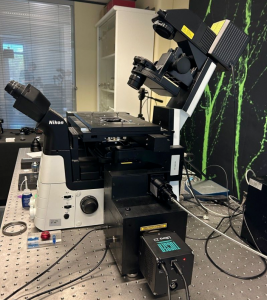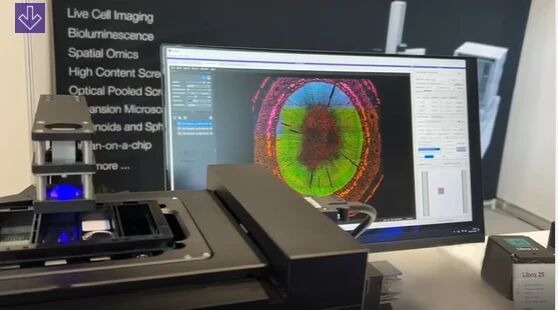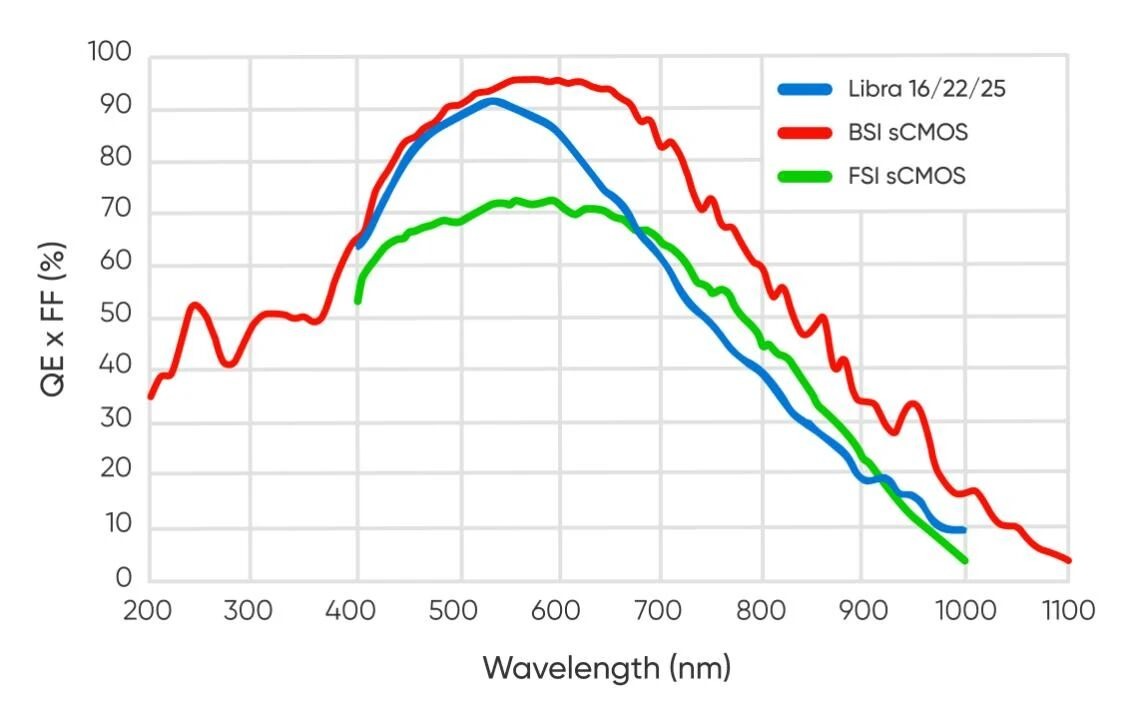
Are You Facing These Fluorescence Imaging Challenges?
Many researchers start with an entry-level camera and quickly face limitations:
● Small field of view leads to constant stitching and lower throughput
● Weak fluorescence signals force you to choose between photobleaching and unreadable images
● Long exposures often produce soft, noisy results
● Upgrading to sCMOS can cost tens of thousands of dollars, with features you may not need
The gap between price and performance has been clear for years. The Libra 16 / 22 / 25 series was designed to close that gap.
What Is the Libra 16 / 22 / 25 Series?
The Libra series includes three models with different sensor formats—16 mm, 22 mm, and 25 mm—all designed for modern fluorescence microscopy. Unlike traditional entry-level cameras that sacrifice performance to cut costs, Libra brings three high-value capabilities together:
● Large sensor formats that match the latest microscope fields of view
● High-resolution imaging mode for clearer structures
● High-sensitivity imaging mode for weak fluorescence and live-cell experiments
● 0°C active cooling for reliable long-exposure imaging
The Libra series adapts to nearly every fluorescence imaging scenario.
Large FOV
Most research microscopes today offer 22 mm or even 25 mm fields of view—but many systems are still paired with 18.8 mm sCMOS sensors that waste imaging area.

Figure 1: Fluorescence imaging system equipped with a Libra 22 camera and CrestOptics spinning disk confocal module.
The Libra series offers three diagonal FOV options: 16 mm, 22 mm, and 25 mm.
This ensures perfect compatibility with systems ranging from educational microscopes to advanced research platforms.
Dual Imaging Modes: High Resolution + High Sensitivity
The Libra series switches instantly between two imaging modes optimized for different experimental conditions.
Model A: High-Resolution Imaging
The high-resolution mode uses a 3.75 μm pixel pitch, ideal for Nyquist sampling with 20×–40× objectives, enabling superior structural detail.
The Libra series offers three resolution options: 9MP, 16MP, and 21MP, combined with a large sensor format, making it especially suitable for cell biology and pathology research.

Figure 2:Cephla Squid+ system integrated with a large-format Libra camera, fully compatible with the Libra 16/22/25 series.
Model B: High-Sensitivity Imaging
Weak fluorescence imaging often struggles with signal-to-noise ratio challenges. The Libra series introduces a 7.5 μm large-pixel sensitivity mode, allowing each pixel to capture significantly more photons.
Performance boosts include:
● Up to 2× higher SNR compared to high-resolution mode
● 33+ fps USB 3.0 readout, approaching modern sCMOS performance levels

Figure 3:Quantum efficiency comparison
This mode is especially suited for low-light imaging applications, such as confocal imaging and live-cell dynamics, including processes like cytoskeleton remodeling and vesicle transport, balancing low phototoxicity with high temporal resolution.

Figure 4: Weak fluorescence imaging comparison
Low-Noise Long Exposure
Long exposures are traditionally limited by thermal noise. Libra solves this with 0°C active cooling across the entire product line.
The Libra 16/22/25 series excels in low-light imaging scenarios with dark current as low as 0.01 e⁻/pixel/second and minimal background drift, even during 60-second exposures.
This makes it ideal for applications such as bioluminescence imaging, low-intensity microfluidics fluorescence, and ultra-low-light imaging workflows.
Conclusion
The Libra series was never designed to be “just a cheaper option.” It was built to give entry-level users access to true professional imaging quality.
With a single large-format, cooled monochrome camera, researchers can easily switch between high-resolution, high-sensitivity, and long-exposure modes, covering everything from structural observation to weak-signal quantification and long-duration recording.
Libra brings advanced fluorescence imaging within reach, without compromising performance.
Learn more about the Libra 16 / 22 / 25 series and Tucsen’s advanced fluorescence imaging cameras.
FAQs
Q1. How close is Libra to high-end sCMOS performance?
In sensitivity, frame rate, and cooling, the Libra series is comparable to many mainstream sCMOS systems—but its cost is only one-third to one-half.
Q2. Which microscope brands are supported?
All major C-mount microscopes, including:

 ● Zeiss
● Zeiss
● Nikon
● Leica
● Olympus
Free adapters are included for easy installation.
Q3. Is the software easy for new users?
Yes. Mosaic 3.0 includes advanced tools like:
● Real-time stitching
● Real-time ROI quantitative analysis
● Automated measurement tools
● Intuitive workflow design
It’s built for both efficiency and accuracy.


 2025/11/21
2025/11/21







